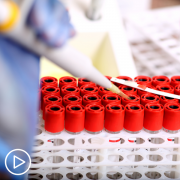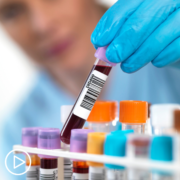When Should Breast Cancer Patients Consider a Clinical Trial?
When Should Breast Cancer Patients Consider a Clinical Trial? from Patient Empowerment Network on Vimeo.
Is there a point in a patient’s breast cancer care when a clinical trial should be considered? Breast cancer expert Dr. Bhuvaneswari Ramaswamy shares her perspective.
Dr. Bhuvaneswari Ramaswamy is the Section Chief of Breast Medical Oncology and the Director of the Medical Oncology Fellowship Program in Breast Cancer at The Ohio State College of Medicine. Learn more about Dr. Ramaswamy.
See More from Breast Cancer Clinical Trials 201
Related Resources:

|

|

|
Transcript:
Katherine:
Let’s talk about where clinical trials fit into a breast cancer treatment plan. When should someone with breast cancer consider a trial?
Dr. Ramaswamy:
And the most important thing again here to understand is clinic – you should consider a clinical trial at all aspects, all parts of your journey through this whole diagnosis and whatever the outcomes that you are going to have. We all have a lot of misconstrued ideas about clinical trials. And one of the thing is we think clinical trials are only when standard of care is not needed like that is that – we don’t have other treatments. That you are coming to a point that you don’t have other treatments and now you should go to clinical trials. That is not true, right? Because the fact that you can have these treatments in your curative setting came because many of the patients before you were willing to go on the trial that compared standard of care, which may not have had that new drug with a competitor to the new drug with the standard of care.
So, nobody gives – the important thing to understand is no one is going to give you a placebo alone for cancer treatment. Think about that. I mean, there’s no way a doctor whose oath is to cure you to help you is going to just give you placebo. So, it is important for you throughout your process to actually ask. In fact, we used to wear a badge to say ask your doctor about clinical trials. So, ask your doctor about it, even if they miss it. Just ask, is there a clinical trial that I could fit in? They’re supposed to look for it, but you don’t need to leave it at that.
Ask at all aspects of your journey for a clinical trial option. If you are not suited for the trial, no provider is going to put you on that trial because everybody has the same goal that you need to get better. Your chances of getting better is high.











